| 1 | King cobra |
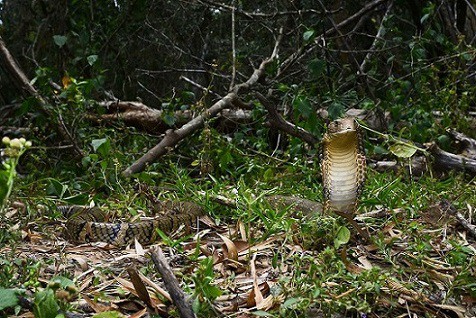
The king cobra is misnamed, as it doesn’t belong to the true family of cobras at all. That family is Naja, and contains 38 species, including not-so-beloved favourites like the Indian cobra and red spitting cobra. King cobras are the sole member of the Ophiophagous family, named after the word ophiophagous, meaning a tendency to eat snakes (which king cobras definitely have).
King cobras were discovered in 1836, and scientists toyed with placing them in Naja for many decades, due to having the signature neck flare. But a bulkier head, and a jumbo length of 4 metres revealed them to be independent, and they finally received their modern name of Ophiophagous hannah in 1945.
In 2016, scientists released one of the most detailed snake evolutionary trees yet. It transpired that king cobras were much more closely related to black mambas and green mambas than any member of the cobra family. The cape coral snake (Aspidelaps lubricus) of South Africa was more closely related to true cobras than the king cobra, as was the rinkhals and Egyptian desert black snake (Walterinnesia aegyptia).
The king cobra stands alone on the evolutionary tree. What’s more, they feel no obligation to their supposed relatives, as Indian cobras are one of their confirmed meals. The king cobra reaches a wild record of 5.85 metres.
| 2 | Mexican burrowing python |
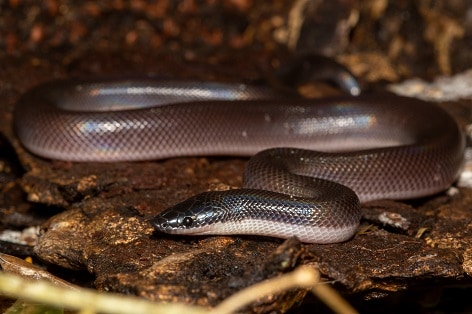
A central American species found in Guatemala, southern Mexico, Honduras, etc, along the Pacific coast. Though dubbed a python, this would probably severely freak out a reticulated python if the two ever had a get together. Its scales are shinier, and its head is far narrower than the bulky, snarling heads of most pythons. This head is designed for digging in soft sands, along the beaches and dry forests where it lives.
Mexican burrowing pythons reach a record of 157cm. This snake has the Latin title of Loxocemus bicolor, and this time scientists got it right from the outset. There was no fumbling; they immediately placed it in the unique family of Loxocemus in 1861, just after its discovery, and it has stayed there ever since. DNA analysis reveals that Mexican burrowing pythons are most closely related to the sunbeam snake of Thailand, another burrower, followed by the true python families.
Being out on a distant limb of the evolutionary tree, Mexican burrowing pythons have some weird quirks for a snake. They’re an egg-eating snake, with one of their favourites being eggs of the Olive Ridley sea turtle. Their strategy is to apply 2 or 3 coils to a whole unbroken egg, squeeze hard, burst it using pressure, and swallow the yolk within. They also secrete a strange waxy substance through their scales, which may be designed to ward off insect pests.
| 3 | Chinese garter snake |

This Korean species spent many years masquerading as a ratsnake, yet for years, naturalists and local Korean nature enthusiasts sensed that something was up. For one thing, it laid live young, whereas all other ratsnakes in the Elaphe family lay eggs.
Chinese garter snakes were also far more aquatic than other ratsnakes. They spend their time in lagoons and lakes, hanging out in thickets along the edges, and rarely straying more than 10 metres away from water. The Chinese garter snake was dubbed Elaphe rufodorsata for decades, but in 2001, it was finally declared to be the only member of the Oocatochus family.
Oocatochus rufodorsatus ranges from China to far eastern Russia, and is particularly abundant in South Korea. This is a weird species, as it acts more similarly to a US garter snake, despite sharing no relation. It only leaves its lake or pond bases in winter, when it can travel over 300 metres to find a hillside hole to hibernate in, usually south-facing to absorb the sun’s warmth. Chinese garter snakes are no threat to humans, and only appear in the countryside, never cities. This species averages at 60-70cm, occasionally reaching 90cm.
| 4 | Lined snake |
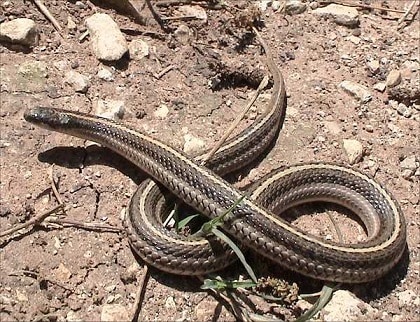
The lined Snake (Tropidoclonion lineatum) is a weird offshoot of the garter snake family, which lives in grasslands of Nebraska and Kansas. Garter snakes already have numerous family members, but this species accidentally diverged too far, plummeted off the family tree, and landed in its own family altogether. Lined snakes are a shy species measuring 20-30cm, with a record of 57.2cm, which are very difficult to find, due to their love of knee high prairie grass. The best time to spot them is crossing roads, after heavy rains.
The garter snakes (Thamnophis) are their closest relative, but this species is far smaller, and has half-moon shaped markings on its belly unique to any US snake. They’re also a dramatically superior burrower to any garter snake. Their diet consists of earthworms and slugs, which they find by enlarging existing soil tunnels, poking their head downwards and vanishing centimetre by centimetre.
Lined snakes were discovered in 1856. The debate rumbled on for a while, but by 1936, they were placed in the Tropidoclonion family, and have been there ever since, as the sole member. Despite this long estrangement, the lined snake and its cousins will sometimes have a reunion. In 2017, scientists stumbled across a partially overturned cow patty in grazed pasture land in Nebraska. They upturned it and found 3 dead common garter snakes, and 6 dead lined snakes, frozen solid. Though they met a grisly fate, they had clearly been hibernating together.
| 5 | Mole snake |
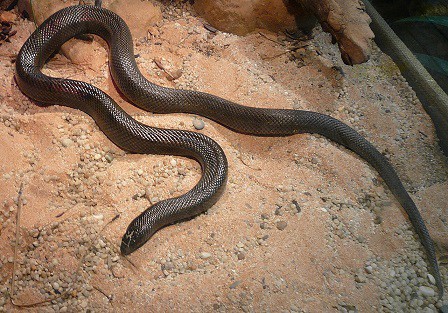
A non-venomous snake which can nevertheless turn nasty if provoked. This 2 metre species lives in the southernmost countries of Africa: Namibia, Botswana, Zimbabwe, and South Africa. Mole snakes like to hide in abandoned mammal burrows. They live in a variety of habitats, but particularly open ones like grassland, scrubland, semi-desert and mountains.
Originally, mole snakes were given the generic family name of “Coluber”, as nobody had a clue what it was. Then it was called Duberria cana, after the Duberria slug-eating family. Cope reached the modern conclusion in 1864 with Pseudaspis cana, before more wrangling and debate until 1893, when Pseudaspis cana was finally agreed on once and for all.
130 years have passed, in which hundreds of new snake species have been discovered. Yet mole snakes still stand tall as the sole member of the Pseudaspis family. Their black shiny scales resemble other South African species like stiletto snakes and black thread snakes, yet at a maximum of 2.1 metres, they’re far longer than those shy species.
The mole snake has a varied diet. They were named for their love of golden moles, but they also eat rodents, Harlaub’s gulls, clicking stream frogs, and eggs of the African penguin.
| 6 | Amazon pipe snake |
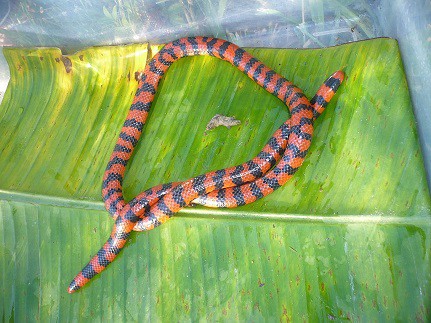
A humble snake which poses no threat to humans. Amazon pipe snakes live in dense rainforests in Venezuela, Ecuador, Peru and western Brazil. They’re a medium snake at approximately 70cm (record: 118.4cm), and have tiny black eyes which blend completely with a dark stripe on their face. Anilius scytale is the only member of the Anilius family, and even physically, they’re a complete anomaly.
This rogue snake looks sleek and advanced like a coral snake, but it’s actually one of the most primitive surviving species, like a relic from another time. It still possesses a pelvic girdle with vestigial spurs, representing shrunken former limbs from its ancient life as a normal reptile. Similarly, its jaws don’t fully unhinge like most snakes, which is more like the transitional snakes that lived around the end of the dinosaur era 65 million years ago. Despite this weakness, it has managed to survive in the depths of the Amazon rainforest, while every other member of its family has died out, if they ever existed in the first place.
Amazon pipe snakes prey on beetles, caecilians (legless amphibians resembling snakes), Bahia slow worms, and other snakes like the black-headed snake. If this sketch is accurate, then they’re one of several snakes to be hunted by the spectacled caiman, a cunning Amazonian crocodilian.
| 7 | Kerala mud snake |
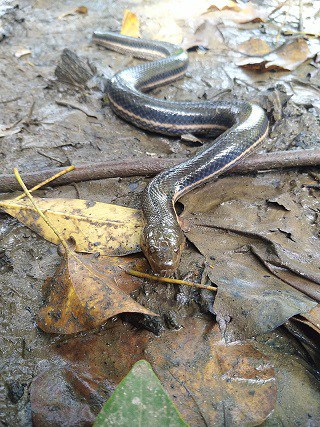
The Kerala mud snake is native only to Kerala in southwest India. This is a friendly looking snake which loves to wallow in mud, but sometimes suffers by being scooped up in fishing nets. This is a Homalopsid watersnake, a distant relative of the dog-faced watersnake, but part of its own family: Dieurostus. They’re a weird offshoot, living in just one narrow corner of the world. The Kerala mud snake was once thought to inhabit Bangladesh as well, but this has been disproven. Its closest relatives worldwide live nowhere near it. These are Richardson’s mangrove snake of Indonesia, and MacLeay’s water snake of Australia.
Dieurostus dussumieri can appear in freshwater marshes, flooded rice paddy fields, and coastal plains like. They love lakes and swamps, and are more common on land after heavy rains.
Kerala mud snakes measure up to 83.5cm. Being part of a unique family. they have a rare feature: salt tolerance. In 2014, scientists found Dieurostus dussumieri on a sandy beach for the first time, just 2-3 metres from the sea. This isn’t a sea snake, so the team was very surprised. A couple of years earlier, they were proven to cope well with salinity, whereas most other southeast Asian water snakes die rapidly. 110 snakes worldwide have salt tolerance, but eliminate the sea snakes and it’s much rarer.
| 8 | Rough-scaled snake |
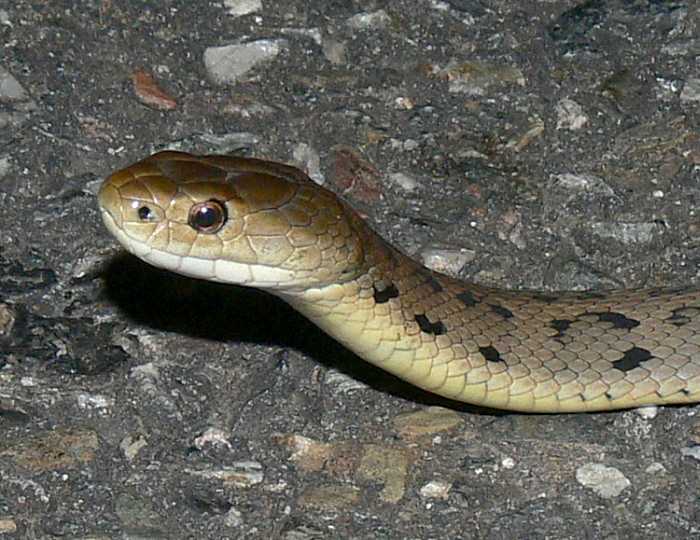
A venomous Australian snake which causes far fewer bites than the eastern brown snakes, but still not one you should approach lightly. Rough-scaled snakes reach a maximum of 100cm, and are the sole member of the Tropidechis family. They were discovered in 1863, and originally placed in the Hoplocephalus family containing the broad-headed snake, a shy rock lover. But later that year they were reassigned to the Tropidechis family, where they remain today.
Rough-scaled snakes are attracted to moistness, luring in high altitude forests and grassy meadows. They’re found on Australia’s central east coast, particularly along the gold coast and near Brisbane. Then there’s a huge gap before they reappear, in a separate population in northeast Queensland. Rough-scaled snakes have a purplish tongue, and one of their confirmed prey is the striped marsh frog.
A 2016 study revealed that they’re most closely related to Australia’s tiger snake (Nochesis scutatus), even though the two would be extremely difficult to confuse. Its next closest relative is the rare Lake Cronin snake, AKA Paroplocephalus atriceps, also found in Australia.
| 9 | Brazilian burrowing snake |
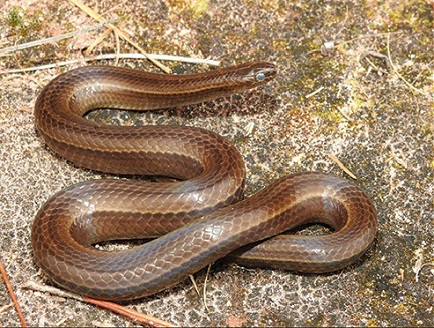
One of many weird snakes stuffed away in remote corners of South America. Brazilian burrowing snakes are found in southern and southeast Brazil, and stick to the borders of marshes and swamps where they can dig in soft soils. They also like grassland, and most of their diet consists of earthworms.
Brazilian burrowing snakes are the sole member of the Gomesophis genus. They were first discovered in 1918, and originally assigned to the venomous slender snake family of Tachymenis. In 1959, the all new family of Gomesophis was created, and they became its only member, a situation which hasn’t changed since.
This snake hardly ever moves by night. A study in Minas Gerais state, Brazil, found that 96.4% of its movements were during daylight, particularly between 9:30 and 17:00. Brazilian burrowing snakes are harmless, but have defensive techniques such as striking, gaping their mouth wide intimidatingly, burrowing into mud, and hiding their head in a nest of coils. One snake that was cornered launched itself into a small stream, never to be seen again. This species measures up to 61.5cm.
| 10 | Cape reed snake |
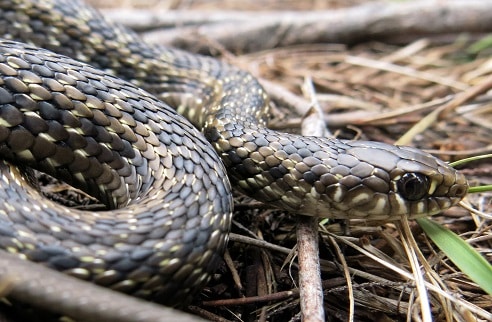
This species lives in South Africa, Zimbabwe and Mozambique. Cape reed snakes reach a maximum of just 63cm,and are a slow-moving species with wide colour variation. They can be black with gold dots, grassy green, or parched beige just as commonly. Their name comes from their habitat: they love to lurk in reed beds and riverine vegetation.
Amplorhinus multimaculatus gravitates towards moister areas in general, and are the sole member of the Amplurhonius family. They were discovered in 1847, and given the modern name straight away. Then they were switched to the large skaapsteker (Psammophylax) family, before being moved back to the unique Amplurhonius family in 1896.
Up close, this is a menacing looking snake, and you might think there’s a sprinkling of mamba DNA in the mix somewhere. But its closest relatives are actually the Duberria slug eating snakes, such as the common slug eater (Duberria lutrix) native to southern Africa. Cape reed snakes possess venom, but aren’t much of a threat. In this 1960 report, a guy thrust his hand into a bag of collected snakes, withdrew it and noticed a reed snake fastening onto his finger, chewing vigorously. He removed the snake after a few seconds, and quickly felt a burning pain. His finger became inflamed, which lasted for 24 hours, but there were no symptoms beyond local.
